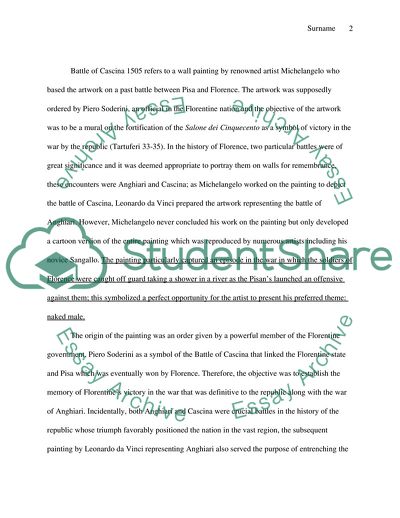Cite this document
(Michelangelo Battle of Cascina 1505 Research Paper, n.d.)
Michelangelo Battle of Cascina 1505 Research Paper. https://studentshare.org/performing-arts/1771874-michelangelo-battle-of-cascina-1505
Michelangelo Battle of Cascina 1505 Research Paper. https://studentshare.org/performing-arts/1771874-michelangelo-battle-of-cascina-1505
(Michelangelo Battle of Cascina 1505 Research Paper)
Michelangelo Battle of Cascina 1505 Research Paper. https://studentshare.org/performing-arts/1771874-michelangelo-battle-of-cascina-1505.
Michelangelo Battle of Cascina 1505 Research Paper. https://studentshare.org/performing-arts/1771874-michelangelo-battle-of-cascina-1505.
“Michelangelo Battle of Cascina 1505 Research Paper”. https://studentshare.org/performing-arts/1771874-michelangelo-battle-of-cascina-1505.


